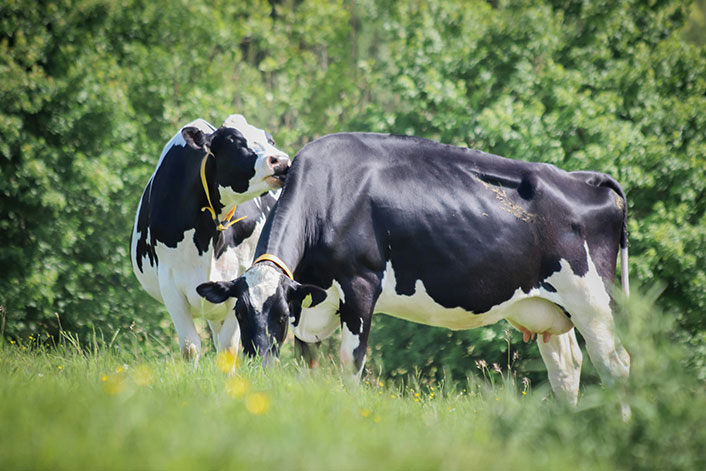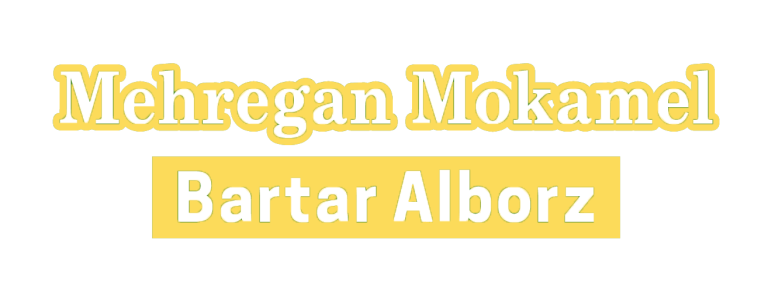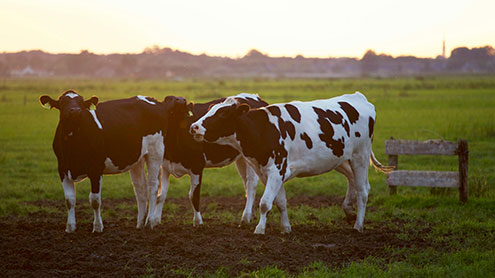Slow-Release Urea for Cattle Feed
Benefits and Applications of NITROPARS
Introduction
Feeding strategies in modern cattle production are rapidly evolving, with a stronger focus on efficiency, sustainability, and profitability. Among the innovations transforming ruminant nutrition is slow-release urea (SRU), a breakthrough feed additive designed to enhance nitrogen utilization while reducing the risks associated with conventional urea supplementation. Our product, NITROPARS, represents a new generation of slow-release urea, engineered for optimal performance in dairy and beef cattle diets.
This comprehensive guide explores the benefits, applications, and science behind slow-release urea in cattle feed, highlighting why NITROPARS is a superior choice for progressive livestock farmers.
What is Slow-Release Urea
Urea is a widely used non-protein nitrogen (NPN) source in ruminant nutrition. Once in the rumen, urea is rapidly hydrolyzed into ammonia, which rumen microbes use to synthesize microbial protein. However, with conventional urea, the release of ammonia can be too fast, often exceeding the microbial capacity to utilize it. This leads to inefficiencies, nitrogen waste, and potential toxicity.
Slow-release urea (SRU) solves this problem. By coating or encapsulating urea granules with protective layers of fat, carbohydrates, or polymers, the release of nitrogen is extended over several hours. This synchronizes nitrogen availability with energy supply in the rumen, improving microbial protein synthesis and animal performance.
NITROPARS, our slow-release urea product, is specially designed with a balanced protective coating of fat, carbohydrates, and minerals. This ensures a controlled and sustained release of nitrogen, maximizing efficiency while minimizing risks.
Why Use Slow-Release Urea in Cattle Feed
1. Enhanced Nitrogen Utilization
Traditional protein sources such as soybean meal and cottonseed meal are costly. SRU provides a more affordable nitrogen source that rumen microbes can efficiently convert into protein. NITROPARS ensures a steady supply of nitrogen, leading to improved microbial protein synthesis.
2. Reduced Risk of Toxicity
Conventional urea, when overfed or improperly mixed, can cause ammonia toxicity in cattle. SRU products like NITROPARS minimize this risk by releasing nitrogen gradually, giving rumen microbes enough time to assimilate it.
3. Lower Feed Costs
Replacing part of expensive protein meals with NITROPARS can significantly reduce feed costs while maintaining or even improving animal performance.
4. Improved Rumen Health
Synchronizing nitrogen release with carbohydrate fermentation promotes a healthier microbial environment, supporting fiber digestion and overall rumen function.
5. Environmental Benefits
Nitrogen losses in the form of ammonia emissions and excreted urea contribute to environmental pollution. By improving nitrogen efficiency, NITROPARS reduces nitrogen waste and enhances the sustainability of cattle farming.
Applications of NITROPARS in Cattle Diets
Dairy Cows
In high-producing dairy cows, protein requirements are particularly high. Supplementing rations with NITROPARS ensures that microbial protein synthesis is optimized, which translates into:
Higher milk yield
Improved milk protein percentage
Better fertility and reproductive performance
Beef Cattle
For beef cattle, cost-efficient growth is essential. Using NITROPARS allows partial replacement of conventional protein sources with a reliable and safe nitrogen source, supporting:
Consistent weight gain
Better feed efficiency
Reduced feed costs per unit of live weight gain
Transition Cows
During the transition period, cows experience negative energy balance and metabolic stress. Adequate microbial protein synthesis through NITROPARS supplementation supports:
Improved liver function
Reduced risk of metabolic disorders
Smoother transition into lactation
Young Stock and Heifers
Although less commonly used in young stock diets, NITROPARS can be applied in properly balanced rations to support growth and early rumen development, when supervised by a nutritionist.
How Does NITROPARS Work?
The effectiveness of NITROPARS lies in its unique coating technology. Each granule of urea is coated with a mixture of:
Fat: Slows the solubilization of urea in rumen fluid.
Carbohydrates: Provide synchronizable energy to rumen microbes.
Minerals: Enhance stability and improve overall rumen fermentation.
This coating ensures that nitrogen is released steadily over time, avoiding the sudden spikes of ammonia seen with conventional urea. The result is improved synchrony between nitrogen and energy supply, which is the key to maximizing microbial protein production.
Inclusion Rates and Feeding Recommendations
Dairy cows: Typically, up to 100–150 g of SRU per cow per day, depending on ration formulation.
Beef cattle: Up to 1% of total dry matter intake can safely be replaced with NITROPARS, under proper guidance.
Important: Always introduce slowly and balance with available carbohydrates to avoid nutrient imbalances.
Consulting a professional nutritionist is essential to determine the exact inclusion rates based on your herd’s
Frequently Asked Questions (FAQ) Slow Release Urea for Cattle Feed
What makes NITROPARS different from regular urea?
NITROPARS is coated with fat, carbohydrates, and minerals to ensure gradual nitrogen release. This minimizes toxicity risk and improves nitrogen efficiency compared to conventional urea.

Can I completely replace soybean meal with NITROPARS?
No. NITROPARS is a source of non-protein nitrogen (NPN) and cannot replace all true protein sources. It should be used to partially replace protein meals in a balanced diet.
Is NITROPARS safe for all cattle?
Yes, when used at recommended inclusion rates. Overfeeding should be avoided, and diets should be properly formulated to match nitrogen release with energy availability.
Does NITROPARS improve milk yield?
Yes. By enhancing microbial protein synthesis, NITROPARS supports higher milk yield and improved milk protein content in dairy cows.
How does NITROPARS reduce feed costs?
By replacing part of expensive protein sources such as soybean meal with a cost-effective nitrogen source, feed costs are reduced while maintaining performance.
Is NITROPARS environmentally friendly?
Yes. By improving nitrogen utilization efficiency, NITROPARS reduces nitrogen waste and ammonia emissions, supporting sustainable cattle farming.
Can NITROPARS be used in all feeding systems?
Yes. It can be incorporated into TMR (Total Mixed Rations), pelleted feeds, or other feeding systems under the guidance of a nutritionist.
Conclusion
slow-release urea represents a major advancement in cattle nutrition, offering economic, environmental, and performance-related benefits. NITROPARS, with its unique protective coating, ensures safe and efficient nitrogen delivery, helping farmers maximize productivity while reducing costs and environmental footprint.
Whether you are a dairy farmer aiming for higher milk yields or a beef producer targeting efficient growth, incorporating NITROPARS into your cattle feed strategy is a smart and sustainable choice.


